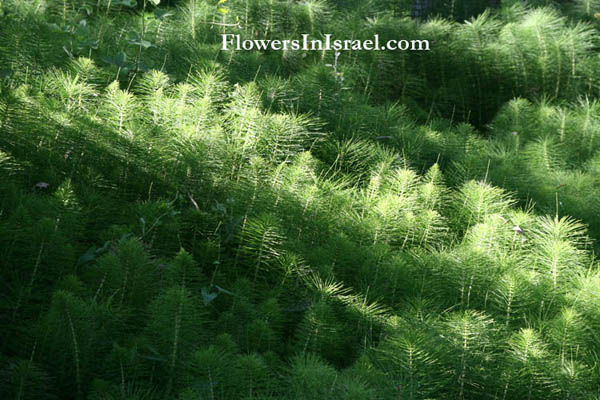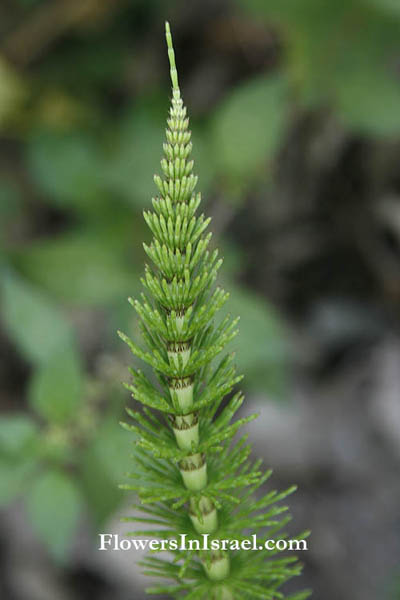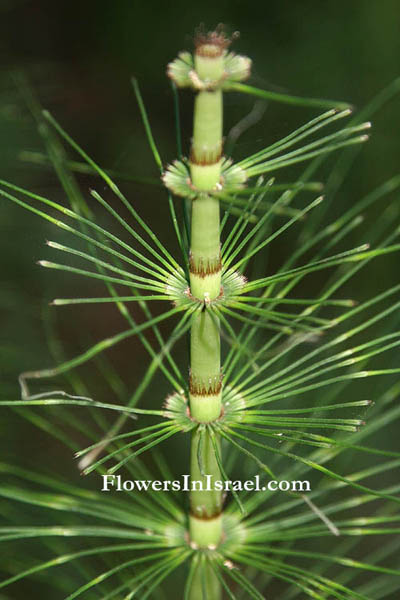Hebrew: שבטבט גדול, Arabic: جنس الكُنباث
| Scientific name: | Equisetum telmateia Ehrh. | |
| Synonym name: | Equisetum maximum auct. non Lam. | |
| Common name: | Giant horsetail | |
| Hebrew name: | שבטבט גדול | |
| Arabic/الاسم العربي: | جنس الكُنباث | |
| Español: | Equisetum telmateia | |
| Nederlandse naam: | Reuzenpaardenstaart | |
| Family: | Equisetaceae, שבטבטיים |

|
| Life form: | Hemicryptophyte | |
| Stems: | 50-85 cm high; stems with hollow center and series of small carinal (under the ridges) and larger vallecular canals | |
| Leaves: | Whorled, scale, acicular (needle-shaped), entire margins | |
| Flowers: | Reproduction by spores | |
| Fruits / pods: | Cones terminal on green stems | |
| Flowering Period: | April, May, June, July | |
| Habitat: | Humid habitats | |
| Distribution: | Mediterranean Woodlands and Shrublands | |
| Chorotype: | Euro-Siberian - Med - Irano-Turanian | |
| Summer shedding: | Perennating |

Derivation of the botanical name: Equisetum, Latin, equus, "horse", and seta, "bristle, animal hair"; horsetail. telmateia, telmat, bog, marsh, swamp; marshland, morass; referring to wet meadows or pools. maximum, largest.
Equisetum telmateia develop extensive underground rhizome systems and can extend more than 4 m deep into wet clay soil. It occupies sites with continually flowing groundwater. The herb's high silica makes it abrasive, and was used from the Middle Ages until the 18th century for scouring pots and pans, especially pewter. John Gerard (1545 – 1611/12), Gerard's Herbal: "Dioscorides says that Horse-taile, being stamped and laid to, does perfectly cure wounds, yea though the sinews be cut in sunder, as Galen adds. It is of so great and so singular a vertue in healing of wounds, as that it is thought, and reported for truth, to cure the wounds of the bladder and other bowels, and helps ruptures and bursting". Charles Frederick Millspaugh (1854-1923), an American botanist, wrote: "It is gathered into bundles by many housewives and used to brighten tins, floors and woodeneware, and in the art of polishing woods and metals.". 
Location: 'Horsetail Reserve', near HaGoshrim |